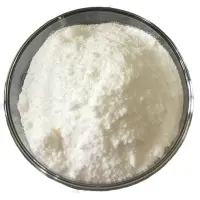-
Categories
-
Pharmaceutical Intermediates
-
Active Pharmaceutical Ingredients
-
Food Additives
- Industrial Coatings
- Agrochemicals
- Dyes and Pigments
- Surfactant
- Flavors and Fragrances
- Chemical Reagents
- Catalyst and Auxiliary
- Natural Products
- Inorganic Chemistry
-
Organic Chemistry
-
Biochemical Engineering
- Analytical Chemistry
-
Cosmetic Ingredient
- Water Treatment Chemical
-
Pharmaceutical Intermediates
Promotion
ECHEMI Mall
Wholesale
Weekly Price
Exhibition
News
-
Trade Service
Cancer-associated fibroblasts (CAFs) are a major component of the tumor microenvironment (TME) and affect the characteristics of cancer, but there are no systematic studies to reveal their prevalent features
in different cancers.
Recently, a research team has conducted a systematic study of CAFs and their subtypes in cancer at single-cell resolution, highlighting the potential heterogeneity and plasticity of
CAFs in cancer biology.
On November 4, 2022, the team of Luo Han and Xu Heng of West China Hospital of Sichuan University and the Jihwan Park team of Gwangju Institute of Science and Technology in South Korea jointly published a paper entitled "Pan-cancer single-cell analysis reveals the heterogeneity and plasticity of cancer-associated" in Nature Communications Fibroblasts in the Tumor Microenvironment"
.
The study performed pan-cancer analysis on 226 samples from 10 solid cancers to analyze TME at single-cell resolution, revealing commonality/plasticity of heterogeneous CAFs
.
https://doi.
org/10.
1038/s41467-022-34395-2
Research background
01
Like malignant cells, heterogeneous tumor microenvironment (TME) composites are an important component of
tumors.
They interact with malignant cells and form the hallmarks of
cancer.
There are different types of nonmalignant cells in TME, mainly fibroblasts, immune cells (such as bone marrow cells, lymphocytes, and macrophages), and endothelial cells
.
Previous studies have highlighted the integral role of TME in cancer's biological abilities, such as tumor progression, treatment resistance, angiogenesis induction and metastasis
.
Among all types of stromal cells, fibroblasts are the main component of TME, while cancer-associated fibroblasts (CAFs) play a significant tumor-supporting role
in cancer.
In addition to interacting directly with malignant epithelial cells, CAFs produce "tumor-permitted" TMEs, including induction of normal fibroblast activation into CAFs, promotion of endothelial cell angiogenesis, recruitment of myeloid cells, and immunosuppressive T cells
.
Therefore, CAFs play a key role in shaping TME by interacting with other TME components, showing their potential value
as prognostic factors and therapeutic targets.
Recent studies have identified various subtypes of CAFs, but the exact origin of CAFs remains controversial, and their lack of universal characterization hinders targeted therapy
for CAFs in clinical practice.
In recent years, the development of single-cell RNA sequencing (scRNA-seq) technology has provided opportunities
to study cell state fluctuations and cell plasticity strength.
Characteristics of cancer cells and TME have been analyzed in multiple cancer types, revealing heterogeneity
of cancer samples of different components at single-cell resolution.
There have also been recent scRNA-seq-based pan-cancer studies that have analyzed cell numbers under controlled bias, demonstrating the universal characteristics
of TME cells.
However, these pan-cancer studies focus only on the properties of immune cells and ignore the interaction
between different cellular components.
Overview of the study
02
To analyze the TME landscape of solid cancers, the researchers compiled single-cell transcription maps
of 10 common solid cancer types.
After strict quality control and filtration, a total of 855,271 cells from 226 samples were included, and a total of 34 TME-related clusters
were generated by unsupervised clustering.
Based on typical markers of different cell types, these clusters are divided into 5 major cellular components, including fibroblasts, lymphocytes, myeloid cells, endothelial cells, and plasma cells
.
Through CellphoneDB-based analysis, the researchers found that in TME, crosstalk between fibroblasts, endothelial cells, and myeloid cells predominates, while in tumor/adjacent samples, fibroblasts interact most frequently
with other TME components, regardless of tissue type.
This suggests that fibroblasts may play an important role
in cancer biology through communication with other TME components.
The research team brought together CAFs from all cancer types to explore possible activation processes
for CAFs.
Evolutionary trajectories have shown that the main CAFs originate from NFs (normal tissue) and evolve into different states of differentiation that may have different effects on
TME.
The activation trajectories of the main CAF types are divided into three states, exhibit different interactions with other cellular components, and are related to
the prognosis of immunotherapy.
In addition, a small portion of CAF components represent alternative sources
of other TME components, such as endothelial cells and macrophages.
In particular, the widespread endothelial-mesenchymal transition CAF may interact with macrophages associated with proximal SPP1+ tumors and is associated with
endothelial-mesenchymal transition and survival stratification.
Summary of the study
03
In conclusion, this study systematically characterizes CAFs in various cancers, not only providing a possible origin for CAFs, but also highlighting the different states
of CAFs in immunotherapy outcomes and prognosis.
While further experimental validation is needed to determine the functional role of each CAF cluster and the different origins of CAFs, the researchers say that pan-cancer studies of CAFs may facilitate the development and application
of future targeted therapies for CAFs.
Resources:
https://doi.
org/10.
1038/s41467-022-34395-2







